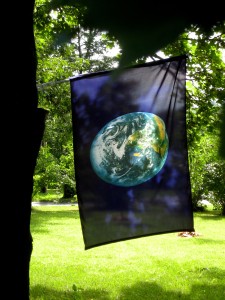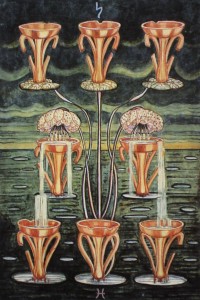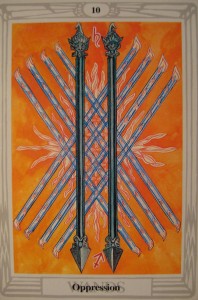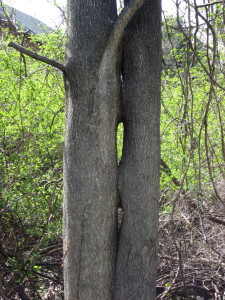
– Photo by Jan Ketchel
“The earth will never be destroyed,” said Chuck to me last night. “It’s a consensus reality.” What he meant was that there are millions of people upholding the idea of earth and everything in it as real. Each person now alive would have to drop their projections, lose their belief systems, free their minds, and release their attachments for the earth to suddenly fade from sight. It would be like taking a mass psychedelic trip or a giant thick fog rolling in, hiding from view all that we consider reality.
Does that idea send shockwaves of fear through you, the idea of having nothing to hold onto, nothing familiar in your life? Personally, I find the idea utterly freeing, the notion of all of this disappearing and there being nothing but the ethers: defined as a formless, infinitely elastic medium, also known as the space above the atmosphere of earth, the heavens composed of the moon, the stars and planets. Imagine the energy we’ve all projected into creating this reality, that we’ve spent our lives upholding, finally released, to be used for something far greater.
The bardos, negative emotional states, beliefs that we project within the consensus reality of this world, are always right next to us, ready to snag us and pull us back, away from such ideas as the one I postulate above. The bardos make up not only our consensus reality, the world we inhabit, but the world within as well, the world of thoughts and ideas that keep us caught in the repetition of our behaviors, habits, beliefs, stuck in the core issues that keep us from evolving, such as rejection, abandonment, entitlement, victimhood. The bardos are where worry, fear, indolence, strife, and negativity reside, popping up to defeat us in endless battles with the projections of this world. We turn to them more often than we turn to our spirits, which seek to be freed of all that is in this world so that we can enjoy “All That Is” in the ethers of infinity.
Our projections keep us bound to the bardos. I create my reality by that which I project. My needs, fears, and worries create my reality. If the consensus reality says that my symptoms indicate a certain condition, then I get sick. If I project my fears into the world, those fears come to haunt me. If I am certain that something bad will happen, then it will happen. In the bardos of my projections, in the thoughts I create, the ideas I uphold and the fears I hold onto, my world is created. If I am aware that I am doing this, however, I can change how I attach to the consensus reality. I can decide that no, I am not sick, I am not afraid, and only good things will happen to me. Suddenly, my reality shifts.

I also know that if I project my needs, fears and worries outwardly onto others then other people in my life will not advance either, even if I hold onto them with my deepest love. My sense of owning or entitlement to another human being only holds them back. We must let all beings go. Others will not move out of my sphere if I hold onto them with negative thinking either, with jealousies, hatred, or even with perceived brilliance, with adoration or worship. I must own and learn from all my projections if I am to free myself too to move on.
We have the power within us to change our reality, but do I really want to see the world obliterated? I don’t believe, as Chuck suggested last night, that it will ever happen at this worldly level, but it is what we are all charged with doing at an individual level. We must accept also that the world we have created is here for us to fully engage and learn from. We must fully live in this world—do our time so to speak—if we are to be at a point of detaching from it for the last time.
To fully live means that as we grow up and seek to make a mark in the world, we must encounter all that we project, all the challenges that belong to us in this lifetime. It’s so easy to fall back into the slumber of the bardos, but the true work of individuation is to journey through life becoming increasingly awake and aware of how things really work, and that takes work.
As we do our deep inner work, as we attempt to free ourselves of our personal projections and issues—in a process such as recapitulation, for example—we do free ourselves of this consensus reality in a step-by-step process of eliminating from our psyches all that once held us bound to the bardos. In the bardo states of this world we churn away overdoing, over indulging, over eating, over drinking, over stimulated to the point where our energy reserves are depleted and our spirits sunk to the depths, far from contact. In this depleted energy state we no longer contribute any energy either to the advancement of this world. As our own energy flags, we become nothing more than entities draining the energy that others contribute to a changing world.

– Photo by Jan Ketchel
If we are to be part of a changing world we must constantly contribute new energy to that change by changing ourselves. It is not healthy to stay in the bardos, dulling our energy and the energy of the world. If we are challenged to do anything during our lives, it is to keep the flame of change burning by adding to its potential by challenging ourselves to constantly shift into states of higher awareness.
Just as the bardos are there always ready to grab us, to sabotage our progress, so too are our spirits right there too, ready to connect with us. Our true work of individuation is the work of gaining knowledge of our spirits, of learning to trust them as we allow ourselves to drop our projections and have experiences of the ethers, of our energetic selves, even while we are living in this consensus reality. It is the work of the human being who is aware of reincarnation to live up to the challenges of each lifetime and gain the momentum to move beyond continuous cycles of reincarnation.
In pulling our heads up out of the bardos long enough to grasp the possibility of the disappearance of this consensus reality as we know it, we offer ourselves new energy and new momentum. Without fear that we are missing out or losing something, as we grow into later adulthood we must learn how to let go of our attachments to all that is in this world, knowing full well that each of us, even those closest to us and whom we love the most, are on the same journey.
Each individual is challenged to move out of the bardos and advance to a higher level of consciousness. In so doing, at our death we do not leave this world a more depleted place but a brighter place, our evolving energy feeding the fires of change. I feel this kind of vibrant energy every time I communicate with Jeanne. Her evolving beyond this consensus reality has left a brightness in my own life, and I have learned more from my connection with her than had I not dared myself to trust her and take up the challenges she gave to me during my recapitulation.

– Photo by Jan Ketchel
And I am aware now too that my true purpose extends far beyond this life and this reality. And so I am not afraid to imagine the world disappearing and all that is in this reality releasing—as it will upon my own dying—because I know that all of us are part of something greater, just as Jeanne and her soul group are.
Just trying to add to the energy flame of changing consciousness,
Jan







